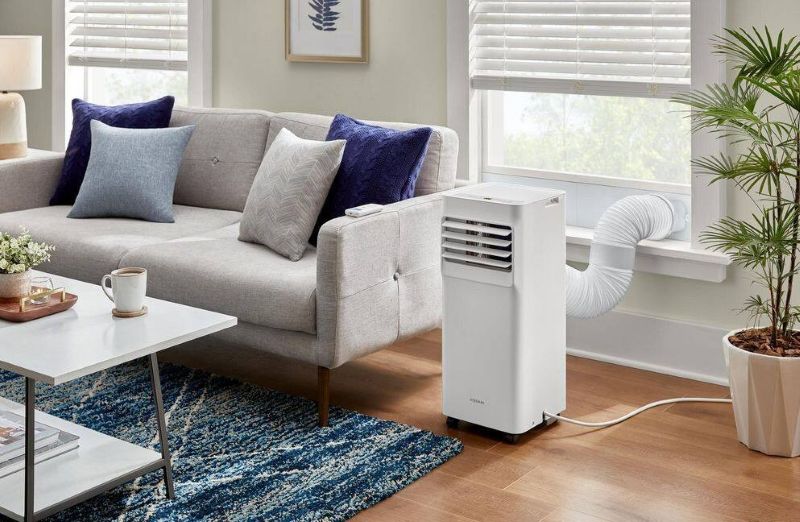4 min read
700 words
As summer approaches, the sweltering heat can make air conditioning a necessity in homes and businesses across Canada. However, determining the right thermostat setting can be a challenge for many. Between balancing comfort, energy efficiency, and utility bills, it’s essential to find the optimal temperature for your air conditioning system. This article provides insights into the best practices for air conditioning settings in Canada, considering various factors including climate, the size of your space, and energy efficiency.
Understanding the Climate
Canada is known for its diverse climate, which can vary significantly from one province to another. While cities in the east, such as Toronto and Montreal, experience humid continental climates, places like Vancouver enjoy a more temperate maritime climate. The northern regions, however, tend to experience cooler summer temperatures. Therefore, the right temperature for air conditioning can change depending on your location within the country.
As a general guideline, the Canadian government recommends a comfortable indoor temperature of 22 to 24 degrees Celsius (72 to 75 degrees Fahrenheit) during the summer months. This range offers a good balance between comfort and energy efficiency. However, the specific temperature you choose may depend on personal comfort preferences, humidity levels, and outdoor temperatures.
Energy Efficiency Considerations
Finding the right temperature for your home air conditioning also has significant implications for energy consumption. In Canada, energy costs can be substantial, especially in regions with extreme weather conditions. Setting your thermostat just a few degrees higher can make a noticeable difference in your energy consumption.
For instance, if you set your air conditioning to 25 degrees Celsius (77 degrees Fahrenheit) rather than 22 degrees Celsius, you could save up to 10% on your cooling costs. Furthermore, using a programmable thermostat allows you to adjust the temperature automatically according to your schedule, which can lead to additional savings. It’s a small change that leads to a big impact on both your wallet and the environment.
Consider Your Space

The size and insulation of your home also play a vital role in determining the ideal air conditioning temperature. Larger homes may require different settings due to the larger volume of air that needs to be cooled. If your home has poor insulation, you may find that the air conditioning struggles to reach lower temperatures, leading to higher energy costs.
In well-insulated homes, setting the thermostat to a higher temperature during peak heat hours can prolong the lifespan of your air conditioner. For example, on particularly hot days, try using 26 degrees Celsius (79 degrees Fahrenheit) during peak hours and lowering it in the evenings when temperatures drop. This method, combined with fans and proper shading, can keep your space comfortable without overworking your AC unit.
Additional Tips for Optimal Comfort
Utilize Fans
Combining air conditioning with ceiling or portable fans can help circulate cool air throughout your space. Fans create a wind-chill effect, making it feel cooler than it actually is. This allows you to raise your thermostat setting slightly while maintaining comfort.
Close Blinds or Curtains
Blocking direct sunlight through windows can significantly affect your indoor temperature. Closing blinds or curtains during the hottest parts of the day prevents heat from entering your home, reducing the workload on your air conditioning system.
Regular Maintenance
To ensure your air conditioning unit runs efficiently, schedule regular maintenance checks. Cleaning filters and coils can enhance performance and prevent issues that could lead to increased energy consumption.
Hydration and Attire
Staying cool isn’t solely dependent on air conditioning. Keeping hydrated and wearing breathable fabrics can enhance your comfort level without needing to set the thermostat extremely low.
Conclusion
Finding the right temperature for your air conditioning in Canada can enhance comfort while promoting energy efficiency. While the Canadian government recommends a range of 22 to 24 degrees Celsius, factors such as regional climate, home size, and lifestyle choices will inevitably influence your ideal setting.
By implementing simple strategies such as using fans, blocking sunlight, and performing regular maintenance, you can maximize your cooling efforts. Ultimately, the right temperature for your air conditioning not only ensures a comfortable living environment but also contributes to energy savings and environmental responsibility. Remember that comfort can vary by individual; it may take some fine-tuning to find the perfect setting for your unique situation.

25.5 C daytime, 23.5 at night.
I set my thermostat at 22.5 C for winter heat and summer central air. Set it and forget it. As to hydo bill, always less than $130 /mon.
I typically set mine at a consistent 23.5°c/74f. Electric bill is usually around $80 a month during peak summer temps
We have are AC set at 71 and energy saver so turns off when at temp.
75f (24c). Still cooler than outside, comfortable and not a total shock coming in from the heat.
I barely turn on my ac I don’t like when it gets so cold inside, my google thermostat is always on eco mode and the fan runs every hour for 30mins. If i do turn on the ac then it’s usually set at 22-23
24C and only run it on the real humid days. Usually only a couple weeks all summer.
I set ours to 71.